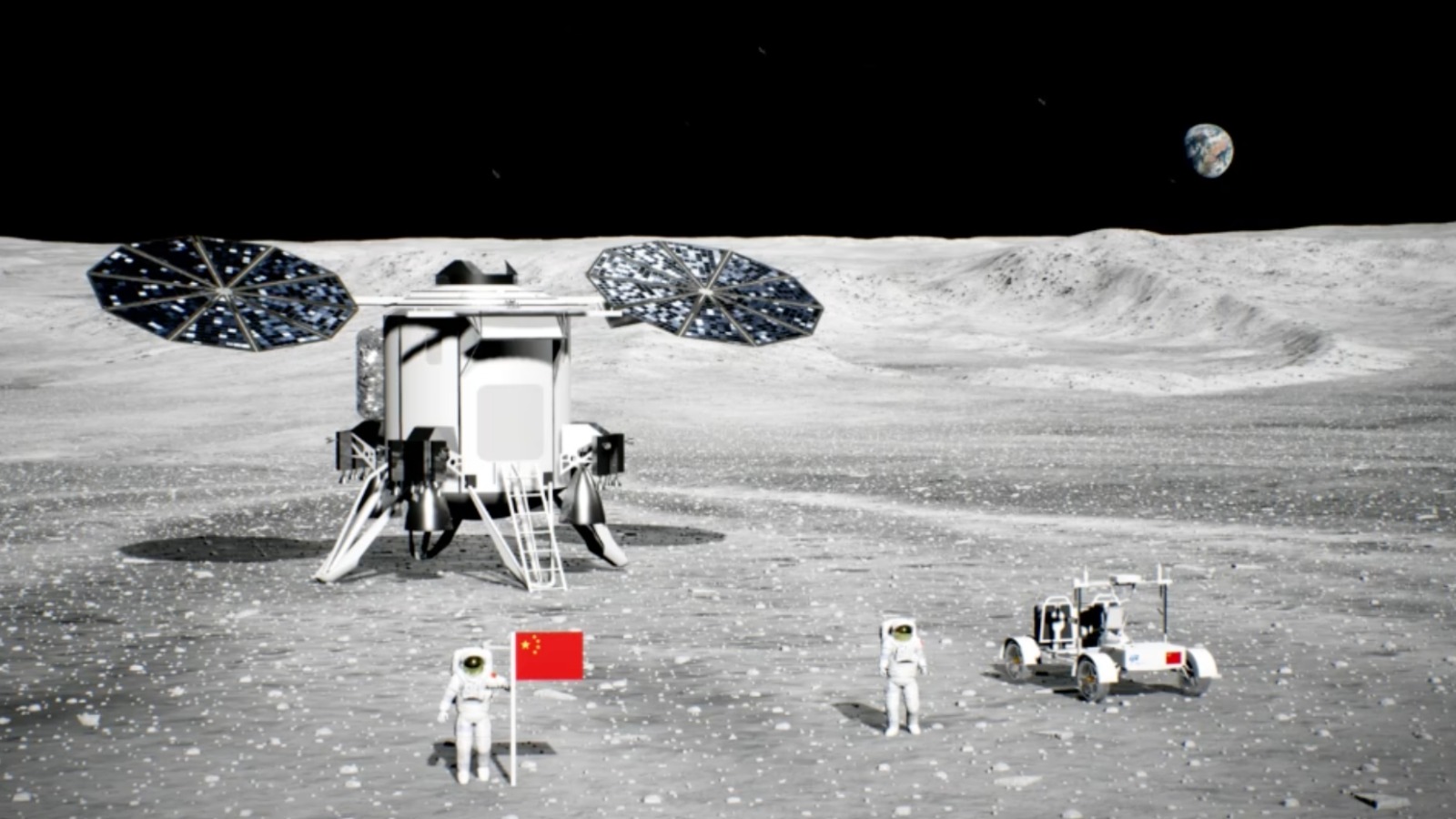Chinese researchers have proposed a magnetic Moon launcher that could significantly lower the expenses of bringing precious lunar materials back to Earth. The magnetic system would operate in the same way as an Olympic hammer thrower to send lunar resources back to Earth
This technology, proposed by the Shanghai Institute of Satellite Engineering, could become a key component of China’s broader vision for a lunar research base at the Moon’s south pole, which Beijing aims to build in collaboration with Moscow.
The new launch system, described in detail in the journal Aerospace Shanghai, is designed to operate on the principle of magnetic levitation. Drawing inspiration from the hammer throw in athletics, the system will use a high-speed rotating arm to propel lunar payloads into space.
According to reports, this magnetic levitation facility could revolutionize space travel by allowing nations to transport cargo from the Moon at a fraction of the cost of existing transport methods.
The proposed launcher would consist of a 50-metre (165ft) rotating arm powered by a high-temperature superconducting motor.
The arm will be designed to accelerate to the Moon’s escape velocity — approximately 2.4 km per second, about one-sixth of Earth’s escape velocity — within just 10 minutes. Once the desired velocity is achieved, the launch capsule, containing lunar materials, will be directed back towards Earth.
This ambitious project, with an estimated construction cost of 130 billion yuan (US$18.2 billion), seeks to take advantage of the Moon’s low gravity and vacuum environment, which are optimal for efficiently launching payloads. Chinese researchers anticipate that the system could handle up to two payloads per day.
The launch mechanism will be powered by a combination of solar and nuclear energy. Its design recovers more than 70% of the energy used in each launch through kinetic energy conversion during the deceleration phase.
The magnetic Moon launcher is expected to have a service life of at least 20 years and will weigh around 80 tonnes.
However, its deployment is contingent on the development and operational readiness of China’s super heavy-lift rocket, which is required to transport the system to the Moon.
The launch station, with the capacity to mine three to five tonnes of helium-3 annually, could yield revenues of 100 billion yuan.
The main challenges for the launcher project include installing it on the rough terrain of the lunar surface, maintaining the stability of the rotating arm at high speeds, and ensuring it can endure extreme temperature fluctuations, cosmic radiation, and lunar dust.
The team plans to finish developing the key components by 2030, with lunar surface testing and full-scale implementation scheduled for 2045.

Beijing Aims to Mine Helium-3
The lunar South Pole has garnered significant attention from major space-faring nations, including China, Russia, and the United States. Scientists regard this region as highly promising for discovering water ice, a crucial resource for establishing future human habitats on the Moon.
These nations are focused on extracting lunar resources, with the primary objective of obtaining Helium-3. This rare isotope is seen as a potential solution to Earth’s energy challenges.
According to researchers at the Shanghai Institute of Satellite Engineering, the goal is to mine and return Helium-3 to help alleviate the global energy crisis.
Experts believe the lunar South Pole harbors a wealth of valuable materials, including Helium-3, hidden beneath the Moon’s surface regolith (the layer of unconsolidated solid material covering a planet’s bedrock).
The Shanghai Institute’s research noted that Helium-3 is abundant on the Moon, unlike its scarcity on Earth. This isotope is vital for nuclear fusion, a technology that could significantly boost energy production.

The project is expected to drive advancements in several areas, including space mining technologies, heavy-lift launch vehicles, and artificial intelligence.
Although transporting other precious metals like Platinum and Rhodium from the Moon to Earth may not be economically viable, Helium-3 is an exception. Lunar ‘cold traps’— areas on the Moon’s surface believed to contain gases such as Helium-3 — could be key to producing substantial amounts of energy on Earth.
Helium-3, which can be valued at up to $2,000 per liter or $59.15 per ounce, is considered the Moon’s most valuable resource due to its rarity on Earth.
A small amount — one kilogram of Helium-3 combined with 0.67 kilograms of deuterium — can generate energy equivalent to running the United States for an entire year.
The Chinese researchers suggested that just 20 tonnes of Helium-3 would be sufficient to meet China’s annual electricity needs.
While Earth contains only about 0.5 tonnes of Helium-3, estimates suggest that the Moon holds approximately one million tonnes of this resource. This abundance could potentially fulfill global energy needs for over a thousand years.
- Contact the author at ashishmichel(at)gmail.com
- Follow EurAsian Times on Google News




